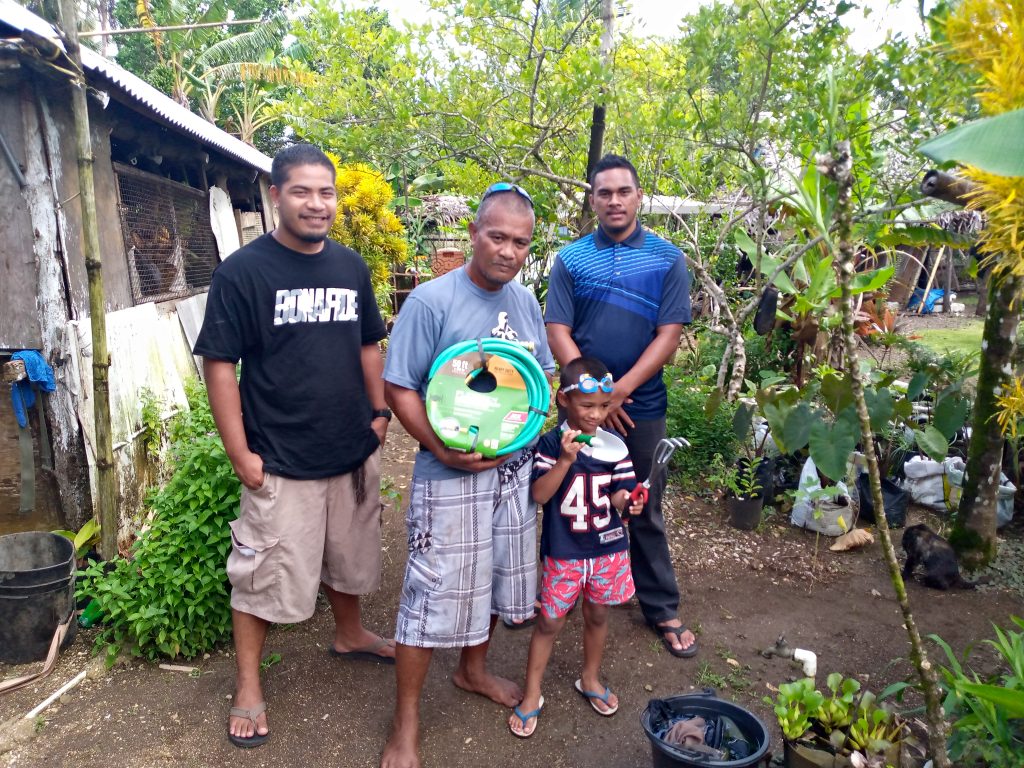SYDNEY – Robby Nena is one of many farmers and fishermen on the front lines of climate change in the Federated States of Micronesia (EFM), where flooding and coastal erosion, variable and heavy rains, increase temperature, droughts and other extreme events are becoming all too common.
The EFM, also known simply as Micronesia, is one of 22 Pacific Independent Island Countries and Territories (PICT). These nations contribute less than 0.03% of the world’s total emissions of CO2 and other greenhouse gases.
However, it is among the countries most vulnerable to the impacts of global warming, climate change and rising sea levels. A quarter of the inhabitants of the Pacific live less than a kilometer from the coast.
“Every time it rains, our house and our farm flood, destroying our crops, damaging infrastructure and posing a great danger to health. Our tapioca and taro crops were completely destroyed in the great flood last month, ”Nena told IPS from EFM’s Utwe village in Kosrae state, through a complicated dialogue on Messenger.
His small concrete house with a tin roof is built on reclaimed land on the banks of the Finkol River, some 200 meters from the Pacific Ocean, within the Transition Zone of the Utwe Biosphere Reserve.
“The river and the ocean meet here, so we also get frequently flooded with salt water at high tide,” says Nena, who lives with her mother, her teacher wife and their two children.
The already apparent and increasingly severe effects of climate change on food security and livelihoods in ITCPs are compounded by a lack of timely access to climate finance for mitigation and adaptation, climate advocates say.
The Green Climate Fund (GCF), part of the financial mechanism of the United Nations Framework Convention on Climate Change (UNFCCC), is currently the largest multilateral climate fund in the world and the main multilateral financing mechanism. to support developing countries in reducing their greenhouse gas emissions and boosting their capacity to respond to climate change.
Belinda Hadley, Micronesia National Designated Authority (NDA) team leader to the GCF, explained that the country does not currently have the technical, financial and human capacity to access climate finance for mitigation, adaptation and mitigation projects. resilience, which are essential to face the growing challenges of climate change.
“It is difficult to make our proposals bankable due to all the requirements. English is the language of climate finance applications, and for most people in the Federated States of Micronesia, articulating needs, challenges and activities in proposals is not easy, as several islands have their own indigenous languages, “Hadley said in a telephone dialogue with IPS.
To be successful, GCF proposals need a strong and robust explanation of the climate impacts and risks that must be addressed. The description of the climate rationale, as requested in the Green Fund proposal template, requires access to sound climate science and data.
Therefore, not having climate data disaggregated from development data makes it difficult to demonstrate the impacts of climate change separately from other sustainable development issues.
“This separate data requirement for climate change makes it difficult for us. We have data on climate change and development consolidated and integrated into one due to our small population and geographic dispersion, ”explained Hadley.
The Federated States of Micronesia is made up of more than 600 islands spread over the four states of Kosrae, Yap, Chuuk and Pohnpei. This geographic dispersion makes disaster preparedness and response challenging and costly.
The pandemic has added another layer to the harsh realities of climate change for the Micronesian Islanders.
“We were working on accessing climate finance to begin our adaptation efforts and advance our national adaptation plan, but we have not been able to conduct state consultations or meet with stakeholders. All attention and resources have been focused on measures to tackle covid-19. Everything else has been relegated to the background, “Hadley explained.
The Green Climate Fund operates through a network of accredited Direct Access Entities (EADs), which are implementing partners and work directly with developing countries for project design and implementation.
The Pacific Community (SPC), which supports the ITCPs with overall coordination and capacity building for their participation in climate finance mechanisms such as the GCF, is the partner for the Federated States of Micronesia.
It also supported the Micronesia Conservation Trust (MCT) to become an accredited Direct Access Entity and thus develop the first full WFTU project on food security, the funding of which was approved in March this year.
MCT Deputy Executive Director Lisa Ranahan Andon told IPS that “this first grant from the Green Climate Fund to the Federated States of Micronesia goes to the people most in need of this intervention, who are the most vulnerable farmers and fishermen. ”.
“We are confident that our approach, which integrates disparate one-off projects into a cohesive national approach, will increase the positive impacts on communities. We are meeting the pre-disbursement requirements and we anticipate a first disbursement and the start of the projects in January 2022, ”he added.
Andon believes that this first award should help pave the way for other PICTs and national Direct Access Entities in the region to secure funding from the Green Climate Fund.
You can read the English version of this article here.
Micronesia as a country it only contributes 0.003% of global CO2 emissions and other greenhouse gases, but they have set an ambitious goal of reducing emissions by 35% by 2025.
In addition to the GCF, Micronesia has received some climate funding from the United Nations Adaptation Fund, the European Union, the Global Environment Facility, the World Bank, the Asian Development Bank, and others, primarily for food security and food security. water, renewable energy, coastal protection and disaster risk reduction.
Kosrae Conservation & Safety Organization (KCSO), a small non-profit organization, supports and implements climate mitigation and adaptation projects in the local communities of Kosrae through climate finance.
As part of one of their 2018 grants, they monitored and collected the crown-of-thorns starfish, an invasive species that destroys coral on the islands of Micronesia, to experiment with its use as a green fertilizer.
“All the farmers we distributed it to said these stars were a good natural fertilizer. This year we have repeated its collection and we have supplied it to four farmers from different towns… Three of the four farmers are seeing very good results, ”KCSO executive director Andy George told IPS.
“If these farmers planted 50 plants and can eat them, it is a success for us. In addition to helping them to be self-sufficient to meet their subsistence needs, we also educate them for climate adaptation and mitigation, ”he added.
Many farmers like Nena, one of the farmers who received this natural fertilizer, only dedicate themselves to agriculture and fishing to survive.
Local products include aubergine, sweet potato, taro, sweet and cooking banana, sugar cane, coconut, and citrus. Fish is a mainstay of food security in most ITCPs and subsistence fisheries continue to provide the majority of dietary animal protein in the region.
Although the PICTs have a small population and land mass, Cameron Diver, Deputy Director General of the Pacific Community in Kanaki, explained to IPS from Noumea, the capital of this French territory also known as New Caledonia, that they are the custodians of important resources, such as tuna stocks, on which countries around the world depend for their food security.
“If these nations cannot access the level of climate finance necessary to address the impacts of climate change on these resources, this could threaten the food security of world populations beyond the region,” he said.
T: MF / ED: EG
–


